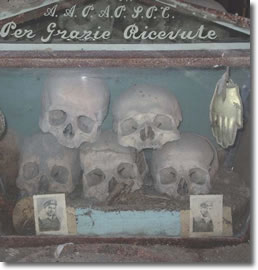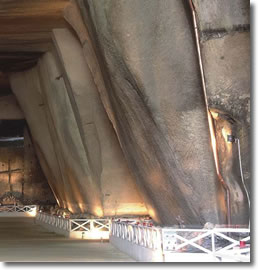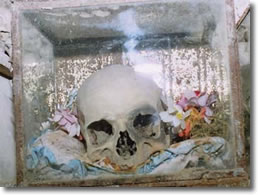
- The "pezzentelle" souls
The cult of the souls in Purgatory - The pezzentelle souls
In the document written by the canonical and archaeologist Andrea De Jorio there is a clear reference to the transformation at the end of the 18th century of the quarry into a place of worship ("...a wall and an altar were built.."). From the mid of the 19th century, a group of women called "e' maste" of the Sanità district rearranged all the mortal rests who had been piled inordinately inside the cavity during various eras. All the bones were arranged near the tufa walls following precise schemes and groupings. This tradition is commemorated with a gravestone outside Maria S. S. del Carmine Church. The gravestone, which can be dated back to the end of the 19th century, represents a commemoration for all those people who died because of the pestilence, poverty or in prison and that for this reason were considered "anonymous" mortal rests.
Gaetano Barbati, founder and promoter of a project for all the "lost souls", coordinated the work of rearranging the mortal rests. In March 1872, the Fontanelle cemetery was opened to the public. Thanks to Barbati and Cardinal Sisto Riario Sforza the first quarry was temporarily used as a Church. On the 13th of May in 1877the first mass took place in the cementery.

